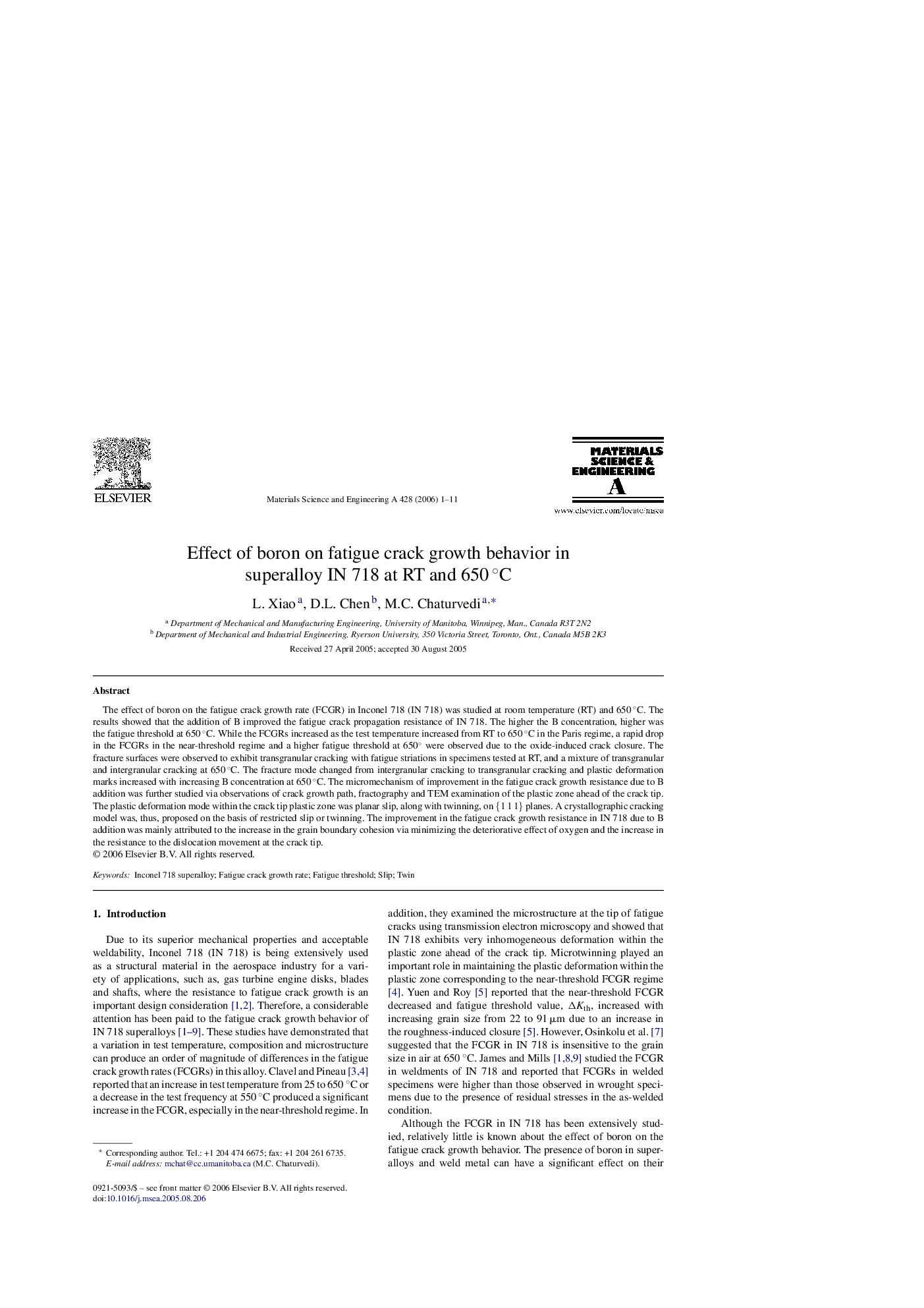| Article ID | Journal | Published Year | Pages | File Type |
|---|---|---|---|---|
| 1585519 | Materials Science and Engineering: A | 2006 | 11 Pages |
Abstract
The effect of boron on the fatigue crack growth rate (FCGR) in Inconel 718 (IN 718) was studied at room temperature (RT) and 650 °C. The results showed that the addition of B improved the fatigue crack propagation resistance of IN 718. The higher the B concentration, higher was the fatigue threshold at 650 °C. While the FCGRs increased as the test temperature increased from RT to 650 °C in the Paris regime, a rapid drop in the FCGRs in the near-threshold regime and a higher fatigue threshold at 650° were observed due to the oxide-induced crack closure. The fracture surfaces were observed to exhibit transgranular cracking with fatigue striations in specimens tested at RT, and a mixture of transgranular and intergranular cracking at 650 °C. The fracture mode changed from intergranular cracking to transgranular cracking and plastic deformation marks increased with increasing B concentration at 650 °C. The micromechanism of improvement in the fatigue crack growth resistance due to B addition was further studied via observations of crack growth path, fractography and TEM examination of the plastic zone ahead of the crack tip. The plastic deformation mode within the crack tip plastic zone was planar slip, along with twinning, on {1 1 1} planes. A crystallographic cracking model was, thus, proposed on the basis of restricted slip or twinning. The improvement in the fatigue crack growth resistance in IN 718 due to B addition was mainly attributed to the increase in the grain boundary cohesion via minimizing the deteriorative effect of oxygen and the increase in the resistance to the dislocation movement at the crack tip.
Related Topics
Physical Sciences and Engineering
Materials Science
Materials Science (General)
Authors
L. Xiao, D.L. Chen, M.C. Chaturvedi,
